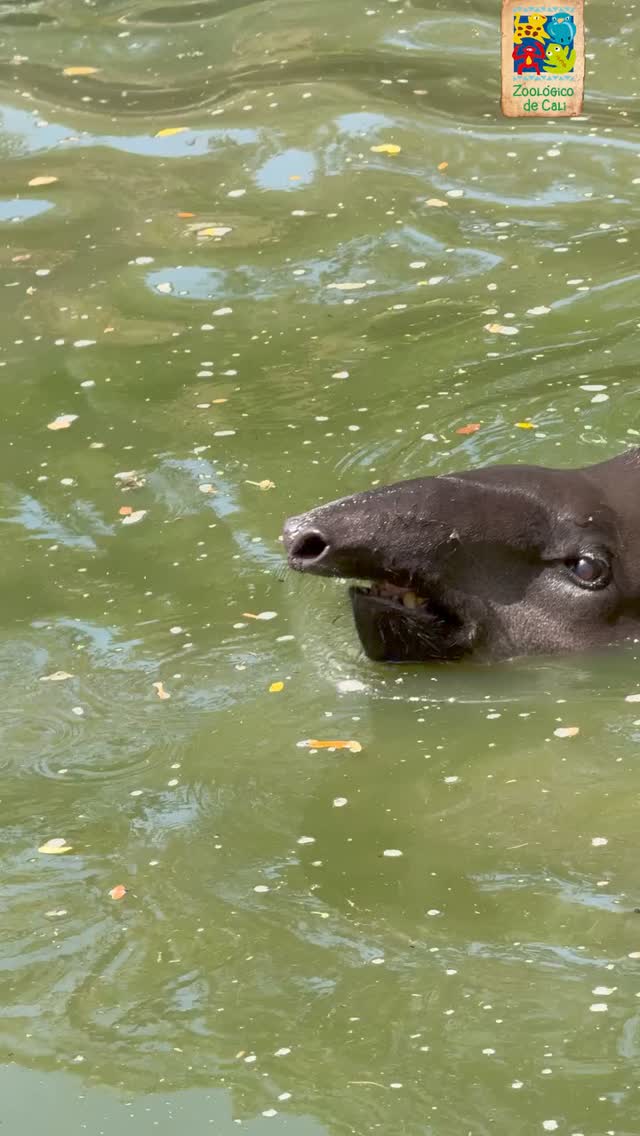– Insights into the behavior and habitat of Amazonian tapirs
– The role of zoos and sanctuaries in wildlife conservation and education
– The importance of ethical wildlife photography and media in fostering conservation awareness
– Challenges and strategies in ensuring the well-being of wildlife in care
– Societal impact and community engagement in wildlife conservation
Amazonian tapirs, or dantas amazónicas as they are known in Spanish, are some of the most intriguing inhabitants of tropical rainforests. These gentle giants are the largest land mammals in South America and play a crucial role in shaping the ecological landscape of their habitats. With prehensile snouts, they are experts at navigating the diverse flora of the Amazon, contributing to seed dispersal and forest regeneration.
Amazonian tapirs are semi-aquatic, and water plays a pivotal role in their lives. It is essential for hydration and provides a sanctuary for them to cool off from the sweltering heat, avoid predators, and even facilitate social interactions. Observing these creatures while they enjoy a refreshing dip is a spectacle that reveals their playful side and underscores their adaptability.
The captivity of these animals in zoos and wildlife sanctuaries can offer invaluable opportunities for research, education, and conservation. These institutions are critical for protecting species vulnerable to habitat destruction and poaching. Well-managed zoos and sanctuaries emulate natural habitats, allowing animals to engage in instinctual behaviors, such as bathing and socializing, just as they would in the wild.
Moreover, these institutions serve as educational platforms, enlightening visitors about the biological characteristics, behaviors, and conservation status of Amazonian tapirs and other species. Through immersive experiences and close encounters, zoos can dispel myths, foster empathy, and inspire a new generation of conservationists eager to protect these animals and their habitats.
Ethical wildlife photography and the portrayal of animals in the media can significantly influence public perceptions and attitudes toward conservation. Images capturing the majestic presence of Amazonian tapirs in their naturalistic enclosures or the wild can evoke emotions and convey the beauty and importance of these creatures. When such content goes viral on social media platforms, it has the potential to rally support for conservation efforts on a global scale.
However, obtaining these visuals responsibly is paramount. Ethical wildlife photographers and videographers strive to minimize animal disturbance, ensuring their welfare is not compromised for a snapshot. The goal is to document natural behaviors without interference, providing a window into the lives of these elusive creatures while respecting their autonomy.
Ensuring the well-being of Amazonian tapirs and other wildlife in managed care involves comprehensive strategies encompassing diet, habitat design, veterinary care, and mental stimulation. Nutritional plans are tailored to mimic the variety and nutritional content of their diets in the wild. Environments are crafted with meticulous attention to detail, enriching through vegetation, water features, and varied terrain, encouraging natural foraging and bathing behaviors.
Moreover, regular health assessments are conducted to monitor the animals’ physical condition and treat any medical issues promptly. Behavioral enrichment activities are also a staple, stimulating cognitive function and reducing potential stress. All these efforts converge to support the overarching goal of maintaining the animals’ physiological and psychological health.
Community involvement is a critical component of wildlife conservation. Communicating the significance of species like the Amazonian tapir to local populations can empower citizens to take action to protect their native wildlife. Participation in citizen science projects, habitat restoration initiatives, and education programs can generate a shared sense of responsibility and a collective will to safeguard these remarkable creatures.
Efforts to protect Amazonian tapirs and their habitats are not limited to zoos or the Amazon region. Conservation is a global responsibility that requires international cooperation, sustainable practices, and a concerted effort to mitigate the impacts of climate change, deforestation, and illegal wildlife trade.
In sum, the sight of Amazonian tapirs reveling in a refreshing bath is more than just an enchanting moment—it reminds them of the intricate connection between these animals and their environment. This image embodies the conservation ethos, sparking a passion for life and a commitment to protect the natural world. By supporting responsible zoos, participating in ethical media practices, and engaging in community-led conservation efforts, society can contribute to a future where Amazonian tapirs thrive not only in their territory but in the hearts and minds of people around the globe.
*****
Source Description
¡Un chapuzón perfecto para hoy!😍💦 Nuestra capturó los mejores momentos de las dantas amazónicas mientras disfrutaban de un refrescante baño en su territorio.
Momentos llenos de pasión por la vida💚💚
Garantizamos el bienestar y la conservación de la fauna silvestre, conectando a la sociedad con la naturaleza y contagiando nuestra pasión por la vida.
.
.


